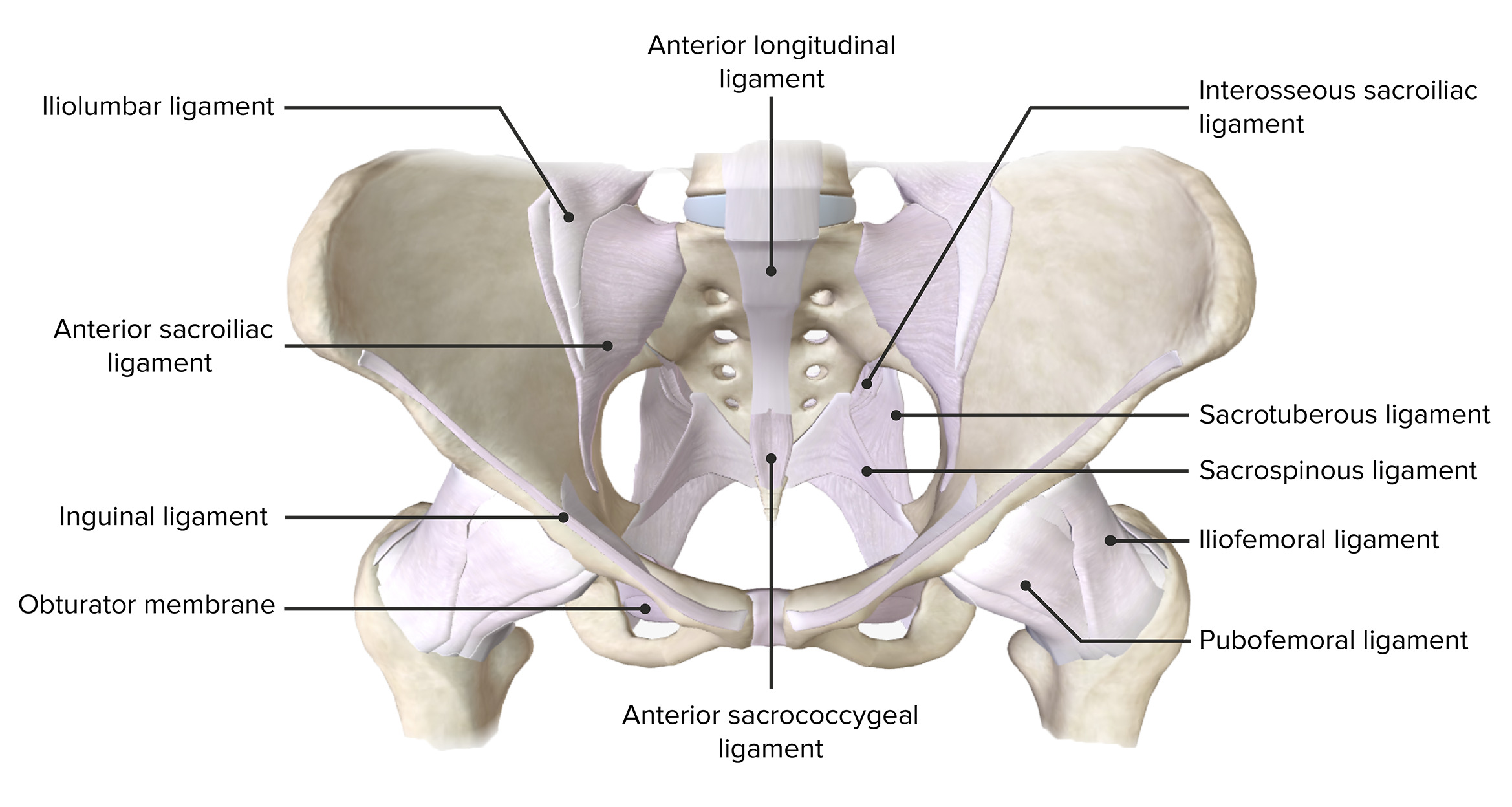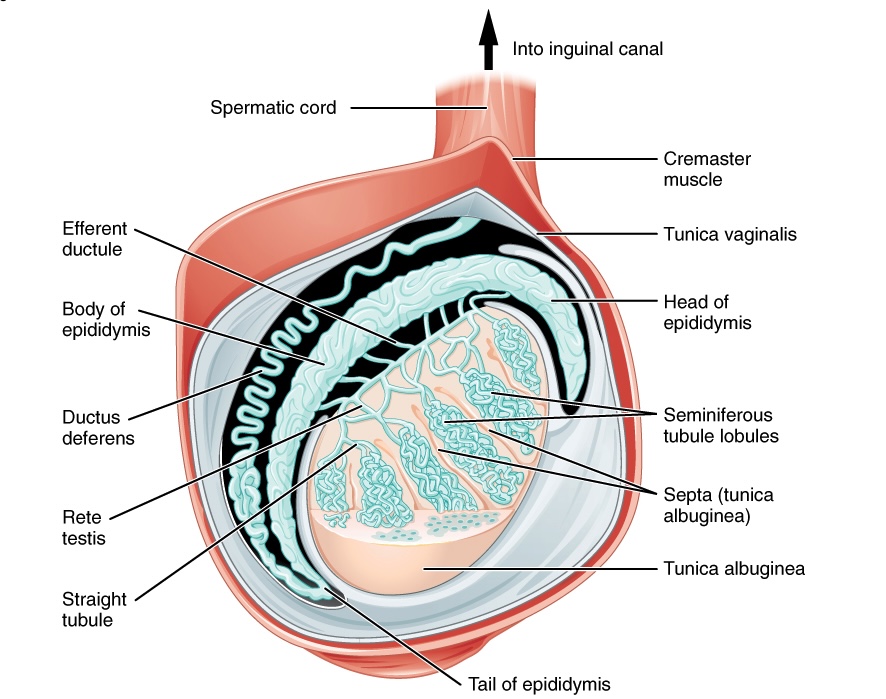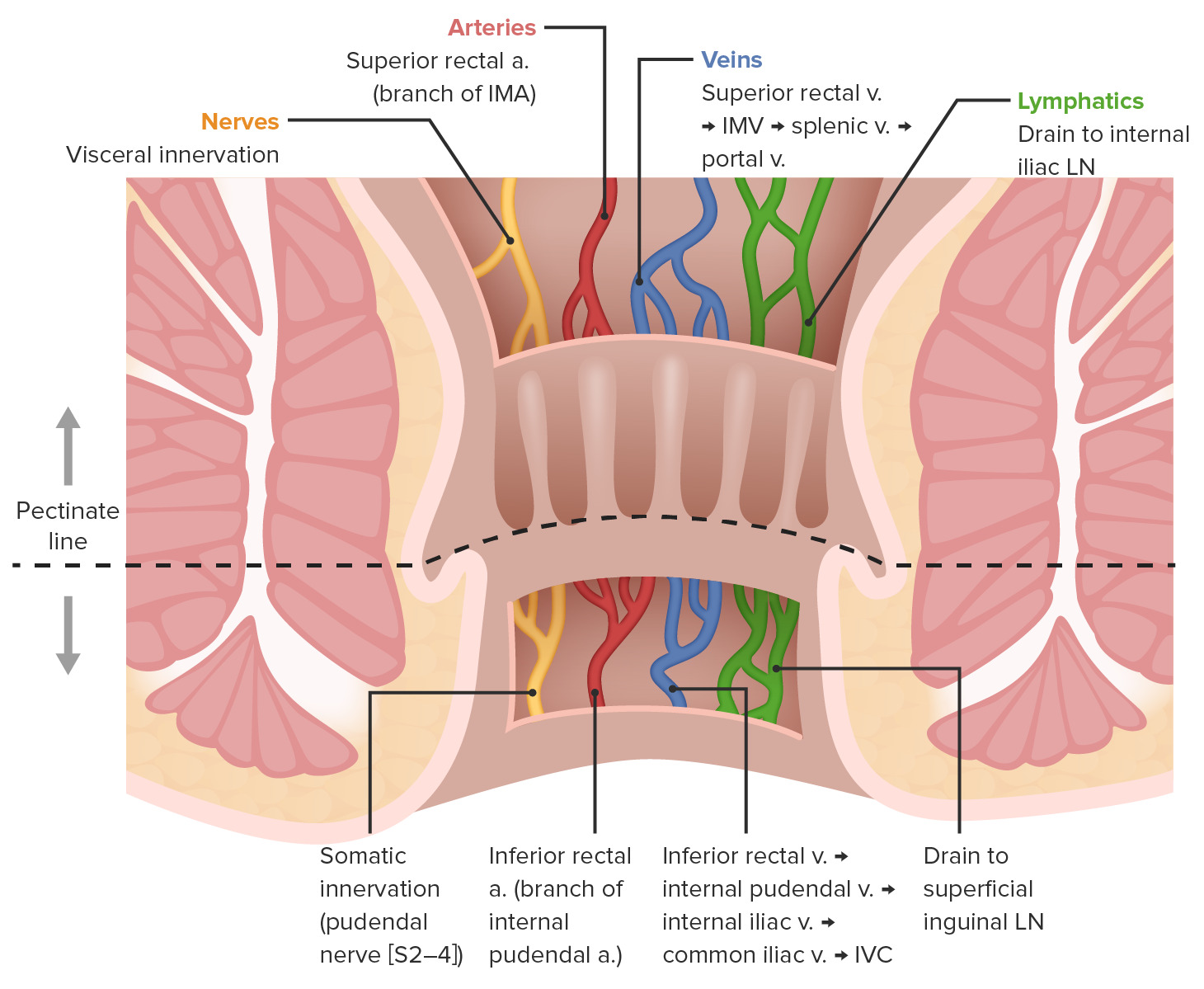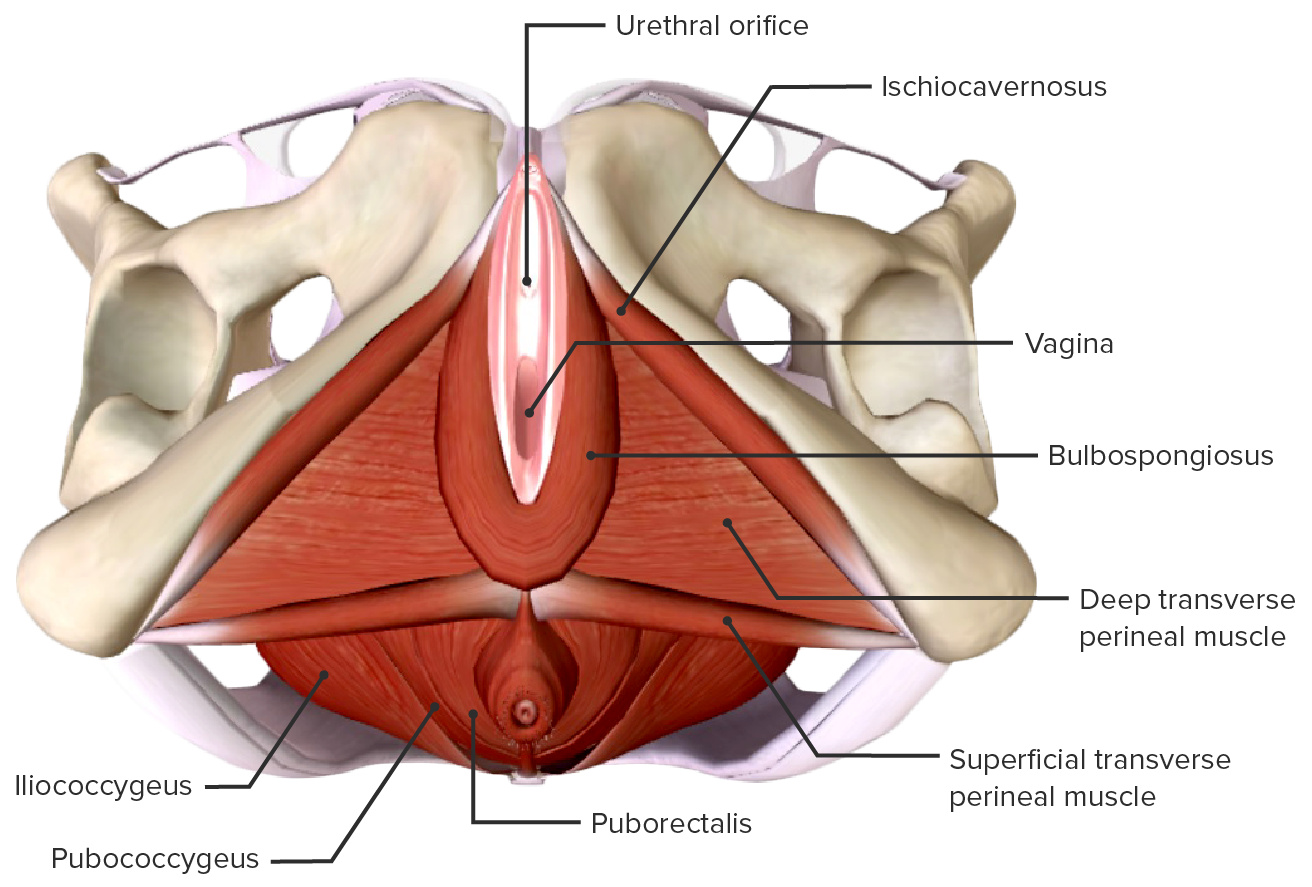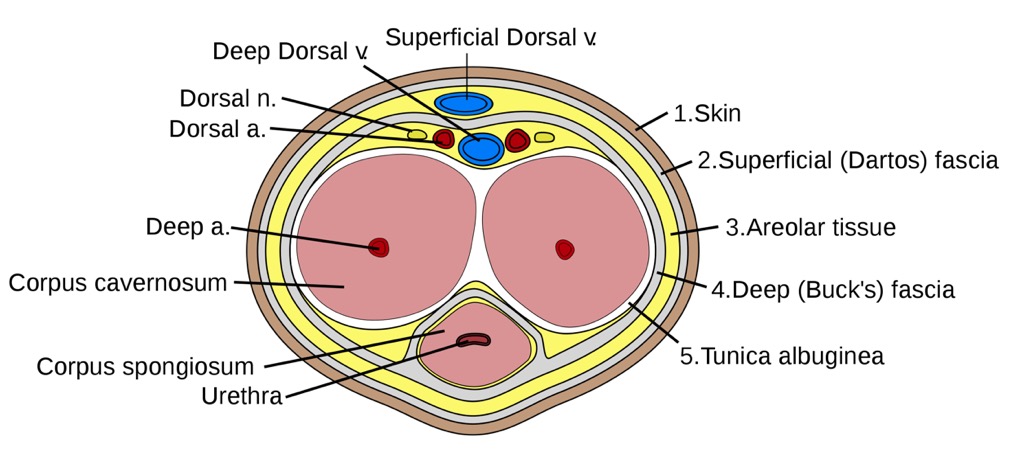Playlist
Show Playlist
Hide Playlist
Boundaries of the Perineum and Perineal Membrane
-
Slides Boundaries of the Perineum and Perineal Membrane.pdf
-
Download Lecture Overview
00:01 So, once again, we're looking at this space as if we're looking at the inferior aspect of the bony pelvis. 00:06 And it's important for us to remember some important bony landmarks. 00:10 So, anteriorly, we have the pubic symphysis. 00:13 Posteriorly, we have the coccyx. 00:17 Laterally, we have the ischial tuberosity on either side, And then connecting this anterior aspect to the more lateral aspects, we have the isiopubic ramus forming this anterolateral margin. 00:30 We also have a posture a lateral margin, and that is the sacrotuberous ligament. 00:35 Remember that's passing from the ischial tuberosity all the way posterior to the sacrum. 00:40 And what this does is this essentially creates a diamond shape. 00:44 So, on both sides, we have that triangle which has been merged together to form this diamond from anterior pubic symphysis, isiopubic ramus, the ischial tuberosity, then to the coccyx. 00:56 And then it will go up on the left hand side of the screen back to the postural lateral margin, the sacrotuberous ligament, the ischial tuberosity, and then back towards the pubic symphysis. 01:06 Now, if we lay in some muscles, here we can see that the perineum this space is wedged between that bony and ligamentous structures. 01:16 So, now, we can add in the pelvic floor, so the pelvic diaphragm and this really forms the roof of that perineum. 01:24 So, now you can appreciate hopefully that the perineum is a space that is superficial or it's inferior to the pelvic diaphragm. 01:33 We're looking at it underneath the pelvic floor muscles levator ani and coccygeus. 01:38 The floor of the perineum is going to be the skin and that's obviously going to take various different patterns depending on the male or the female. 01:47 So, in the male you have the skin around the penis and the scrotal sac. 01:50 And in the female, you have the skin that makes up the labia major and the labia minor. 01:55 Now, let's have a look at the parts of the perineum. 01:58 And to do this, we're going to split the perineum that diamond shaped space into two halves, two triangles. 02:05 An anterior portion triangle and a posterior portion triangle. 02:10 So, here we've drawn a line across the two ischial tuberosities. 02:14 And the triangle that sits anterior to that line. 02:17 So between the isiopubic rami and the pubic symphysis most anteriorly is known as the urogenital triangle. 02:25 So here we have a space that is lying between the two ischiopubic rami and the pubic symphysis anteriorly. 02:32 and this is the urogenital triangle. 02:35 Posterior to the urogenital triangle, we have the second triangle. 02:39 This time it's known as the anal triangle. 02:41 And that's running along the ischiosacral ligaments and it's running towards the coccyx. 02:47 So here we have those two triangles separated by a line drawn between the two ischial tuberosities. 02:54 Let's just concentrate now on the urogenital triangle for a moment. 02:58 So, posteriorly, we have the line passing through the ischial tuberosities. 03:03 And then as I repeated a moment ago, laterally, we have our to ishiopubic rami. 03:08 We can see them highlighted in green. 03:10 There most anteriorly we have the pubic symphysis. 03:14 What we're then going to add into this triangle, this more anterior positioned urogenital triangle is essentially a shelf. 03:22 So, let's just add that shelf and again, we have a space which we can see here. 03:27 Its roof is that of the pelvic floor muscles, which you can see. 03:32 And the floor of it is going to be the skin. 03:35 And what we're going to do is we're going to split that space in two by inserting this shelf, just within this triangle shaped area. 03:43 And that's the perineal membrane. 03:45 So, here we can see it still has some apertures, but it's a membrane a shelf that sits in that triangle space of the urogenital triangle. 03:54 What this does, is between the perineal membrane, and the pelvic floor muscles that we've just seen of the pelvic diaphragm, we've created what's known as the deep perineal pouch. 04:06 This is superior now to the perineal membrane. 04:09 So, if we just go back a couple of slides, we've got this space here, which is the urogenital triangle. 04:15 We've then introduced the perineal membrane. 04:19 The space between those two layers, the pelvic floor, the perineal membrane is the deep perineal pouch. 04:27 What we can then do is on that perineal membrane is add a few muscles. 04:31 The muscle fibers we can see are the deep transverse perineal muscle here. 04:36 We can also add the external sphincter of the urethra. 04:39 This is surrounding, the urethra that's passing through the urogenital triangle. 04:44 And then we can see between the perineal membrane and the skin, which obviously, we're not putting here because you won't be able to see the perineal membrane. 04:52 But between the perineal membrane and the skin of the penis, scrotal sac or the labia, we have the superficial perineal pouch. 05:00 And these two pouches contain very important structures. 05:04 Here we can now add into the superficial perineal pouch. 05:08 The superficial transverse perineal muscle. 05:11 So previously, we go back a couple of slides we had the deep transverse perineal muscle. 05:18 Now, we're moving closer to the skin. 05:21 So, now, adding another layer as we move closer to the skin, we have the superficial transverse perineal muscle. 05:29 We also have another muscle now that's running alongside the ischiopubic rami on each side and heading towards the pubic symphysis This is the ischiocavernosus muscle. 05:42 This muscle is coming from the ischiopubic rami on either side, also the perineal membrane, and it's running forwards towards the pubic symphysis. 05:51 Another muscle within this superficial perineal pouch is one that surrounds the vaginal opening, we can see here, and the urethra and that is bulbospongiosus muscle. 06:04 You can see this one is much more centrally located. 06:07 Located either side of the midline. So, two slips that unite posteriorly by the free edge of the perineal membrane. 06:14 But it converges together towards the pubic symphysis surrounding the vaginal opening and the urethra. 06:20 And that's bulbospongiosus. 06:23 Now, we can start adding in, in this example of the female, the external genitalia. 06:28 So, now we can start adding in the vulva, the opening to the vagina, which we can see here. 06:34 Now, let's have a look at the anal triangle. 06:36 So, that space posterior to the urogenital triangle. 06:40 Before we move on to looking at the sex differences between these two areas. 06:46 If we look at the anal triangle, then we can see now anteriorly we've got that line passing through the two ischial tuberosities. 06:54 Then it tapers posteriorly towards the coccyx by the sacred tuberous ligaments on either side before it converges posteriorly at the coccyx. 07:03 So, here we can see the anal triangle. 07:06 And this has an important aperture, the anal aperture, that transmits the anal canal from the pelvis into the perineum to allow feces to enter the external environment. 07:16 And here we're going to see the anal canal surrounded by the external anal sphincter. 07:21 We'll come back to that later on. 07:24 The space that's now being created with the pelvic floor superiorly and the skin inferiorly is known as the ischioanal fossa. 07:34 This space isn't separated via the perineal membrane. 07:39 So, in the urogenital triangle, you had this space, which was separated by the perineal membrane, giving the deep and the superficial perineal pouches. 07:49 You don't have that shelf like structure of the perineal membrane in this anal triangle. 07:55 So, it's just an open space, which is the issue anal fossa. 08:00 This is a fat filled space that surrounds the anal opening. 08:05 Now let's have a look at the perineal body because this is an important structure centrally within the perineum. 08:12 We can see bulbospongiosus and the superficial and deep transverse perineal muscles converge on this central point. 08:20 We can also see the external anal sphincter passes into the central point alongside these other muscles. 08:27 And this perineal body is important because without it being a bony structure for these muscles to insert to, it is very fibrous. 08:36 But it can become weak. 08:38 And this fibrous structure of the perineal body helps to maintain the integrity of the perineum. 08:44 This perineal body can be ruptured during childbirth, and that can lead to weakening of the perineum.
About the Lecture
The lecture Boundaries of the Perineum and Perineal Membrane by James Pickering, PhD is from the course Perineum.
Included Quiz Questions
What is the lateral boundary of the perineum?
- Ischial tuberosity
- Pubic symphysis
- Coccyx
- Obturator foramen
- Presacral space
What is the posterolateral margin of the perineum?
- Sacrotuberous ligament
- Ischial tuberosity
- Ischiopubic ramus
- Pubic symphysis
- Coccyx
What forms the roof of the perineum?
- Pelvic diaphragm
- Skin
- Coccyx
- Ischiopubic ramus
- Sacrotuberous ligament
What is the posterior border of the urogenital triangle?
- Line passing through the ischial tuberosities
- Ischiopubic ramus
- Pubic symphysis
- Skin
- Perineal membrane
Which perineal muscle surrounds the urethra to help expel urine?
- Bulbospongiosus muslce
- Ischiocavernosus muscle
- Superficial transverse perineal muscle
- Inferior transverse perineal muscle
- Obturator muscle
Customer reviews
5,0 of 5 stars
| 5 Stars |
|
5 |
| 4 Stars |
|
0 |
| 3 Stars |
|
0 |
| 2 Stars |
|
0 |
| 1 Star |
|
0 |

